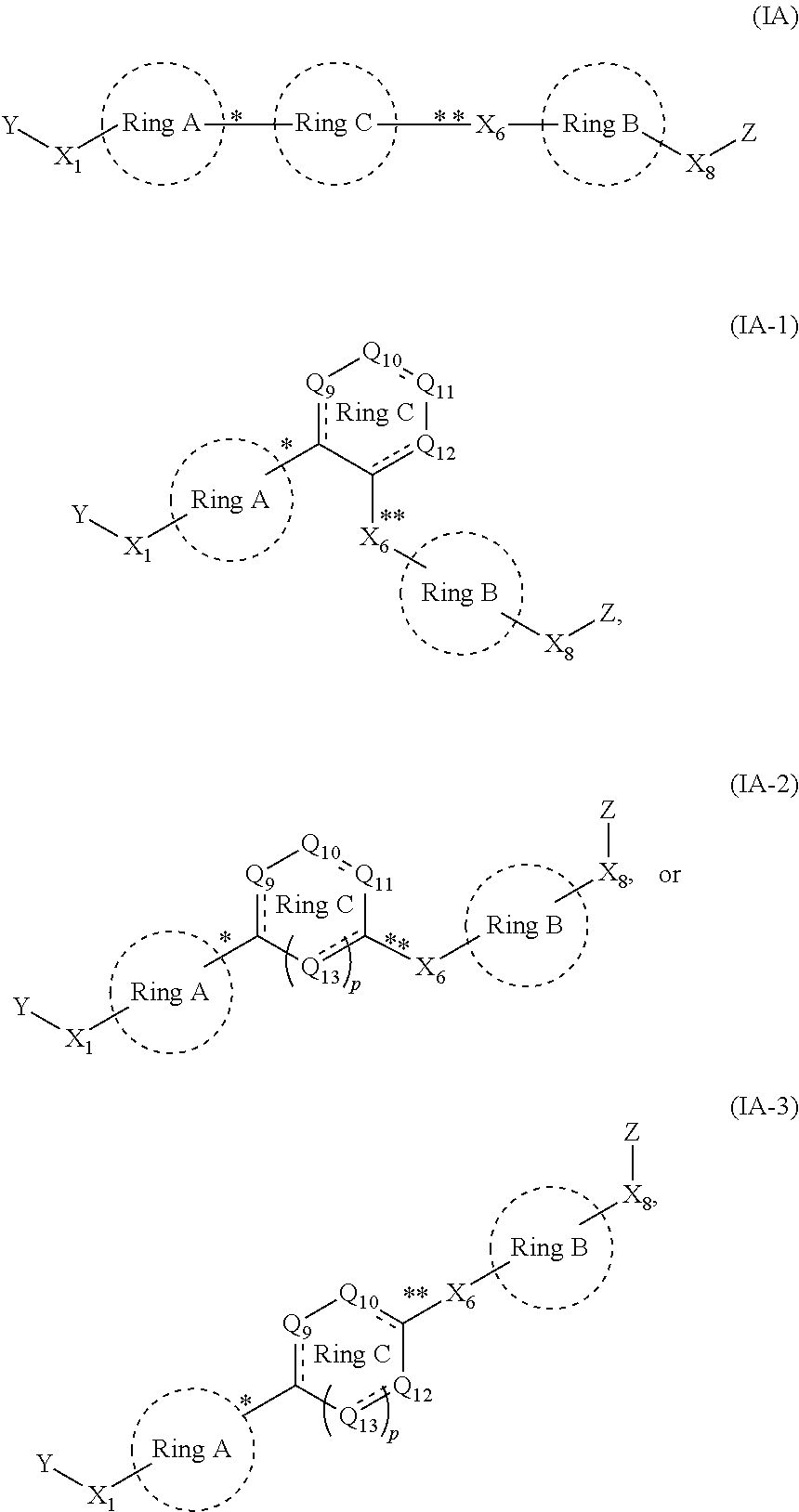Anthelmintic compounds, compositions and method of using thereof
a technology of anthelmintic compounds and compositions, applied in the field of new anthelmintic compounds, can solve the problems of causing a lot of psychological stress, and affecting the health of animals such as mammals and birds
- Summary
- Abstract
- Description
- Claims
- Application Information
AI Technical Summary
Benefits of technology
Problems solved by technology
Method used
Image
Examples
example a
of Acid Intermediate
[0652]
Step 1. Formation of 4-(4-cyano-3-trifluoromethyl-phenylamino)-cyclohexanol
[0653]
[0654]The aryl fluoride (2 g, 10.6 mmol) was placed in a 100 ml round-bottomed flask and stirred in 20 ml acetonitrile at room temperature. Potassium carbonate (3.3 g, 23.9 mmol, 2.2 eq) and 1,4-trans-amino-cyclohexanol (1.34 g, 11.6 mmol, 1.1 eq) were added and the mixture was then heated at 90° C. overnight. The mixture was cooled to room temperature and then concentrated under vacuum. The crude material was purified by silica gel chromatography using 20-40% ethyl acetate in petroleum ether to elute. The product-containing fractions were combined and concentrated under vacuum to provide 1 g (33%) of the desired aniline as a yellow oil. (ES, m / z): [M+H]+ 285.0; 1H NMR (300 MHz, DMSO): δ 8.04 (d, J=9.3 Hz, 1H), 7.42 (d, J=7.8 Hz, 1H), 7.06 (d, J=1.8 Hz, 1H), 6.82-6.86 (m, 1H), 4.59 (d, J=4.2 Hz, 1H), 3.39-3.49 (m, 2H), 1.78-1.94 (m, 4H), 1.18-1.32 (m, 4H).
Step 2. Formation of [...
example b
of Acid Intermediate
[0659]
Step 1. Formation of 4-(4-nitro-3-trifluoromethyl-phenylamino)-cyclohexanol
[0660]
[0661]The aryl fluoride (500 mg, 2.4 mmol) was placed in a 100 ml round-bottomed flask and stirred in 10 ml DMSO at room temperature. Potassium carbonate (661 mg, 4.75 mmol, 2 eq) and 1,4-trans-amino-cyclohexanol (413 mg, 3.59 mmol, 1.5 eq) were added and the mixture was then heated at 90° C. overnight. The mixture was cooled to room temperature and then partitioned between water and ethyl acetate (3×80 ml). The organic layers were combined, washed with saturated aqueous sodium chloride, dried over sodium sulfate, filtered, and concentrated under vacuum to provide 400 mg (55%) of the desired aniline as a yellow solid. On both the 10 g and 50 g scale, similar reaction conditions (using acetonitrile as the solvent) provided a 76% yield of the desired product.
Step 2. Formation of [4-(4-nitro-3-trifluoromethyl-phenylamino)-cyclohexyloxy]-acetic acid tert-butyl ester
[0662]
[0663]In a...
example c
of Amine Intermediate
[0666]
Step 1. Formation of tert-butyl 4-[[4-nitro-3-(trifluoromethyl)phenyl]amino]piperidine-1-carboxylate
[0667]
[0668]To a solution of 4-fluoro-1-nitro-2-(trifluoromethyl)benzene (5 g, 24 mmol) in DMSO (50 ml) was added tert-butyl 4-aminopiperidine-1-carboxylate (4.78 g, 23.9 mmol, 1 eq.) and potassium carbonate (9.9 g, 72 mmol, 3 eq.). The resulting mixture was stirred with heating overnight at 100° C. (oil bath) and then diluted with water (300 ml). The solids were collected by filtration to afford tert-butyl 4-[[4-nitro-3-(trifluoromethyl)phenyl]amino]piperidine-1-carboxylate as a yellow powder (8 g, 86%); (ES, m / z): [M+H]+ 390.0; 1H NMR (300 MHz, DMSO-d6): δ 8.06 (d, J=9.3 Hz, 1H), 7.47 (d, J=7.8 Hz, 1H), 7.08 (d, J=2.1 Hz, 1H), 6.89 (dd, J=2.4, 9.3 Hz, 1H), 3.87 (d, J=13.5 Hz, 2H), 3.68 (m, 1H), 2.95 (m, 2H), 2.54 (s, 0.6H), 1.89 (m, 2H), 1.39 (s, 9H), 1.28 (m, 2H).
Step 2. Formation of N-[4-nitro-3-(trifluoromethyl)phenyl]piperidin-4-amine (Amine #1)
[0669]
[...
PUM
| Property | Measurement | Unit |
|---|---|---|
| size | aaaaa | aaaaa |
| size | aaaaa | aaaaa |
| % v/v | aaaaa | aaaaa |
Abstract
Description
Claims
Application Information
 Login to View More
Login to View More - R&D
- Intellectual Property
- Life Sciences
- Materials
- Tech Scout
- Unparalleled Data Quality
- Higher Quality Content
- 60% Fewer Hallucinations
Browse by: Latest US Patents, China's latest patents, Technical Efficacy Thesaurus, Application Domain, Technology Topic, Popular Technical Reports.
© 2025 PatSnap. All rights reserved.Legal|Privacy policy|Modern Slavery Act Transparency Statement|Sitemap|About US| Contact US: help@patsnap.com



